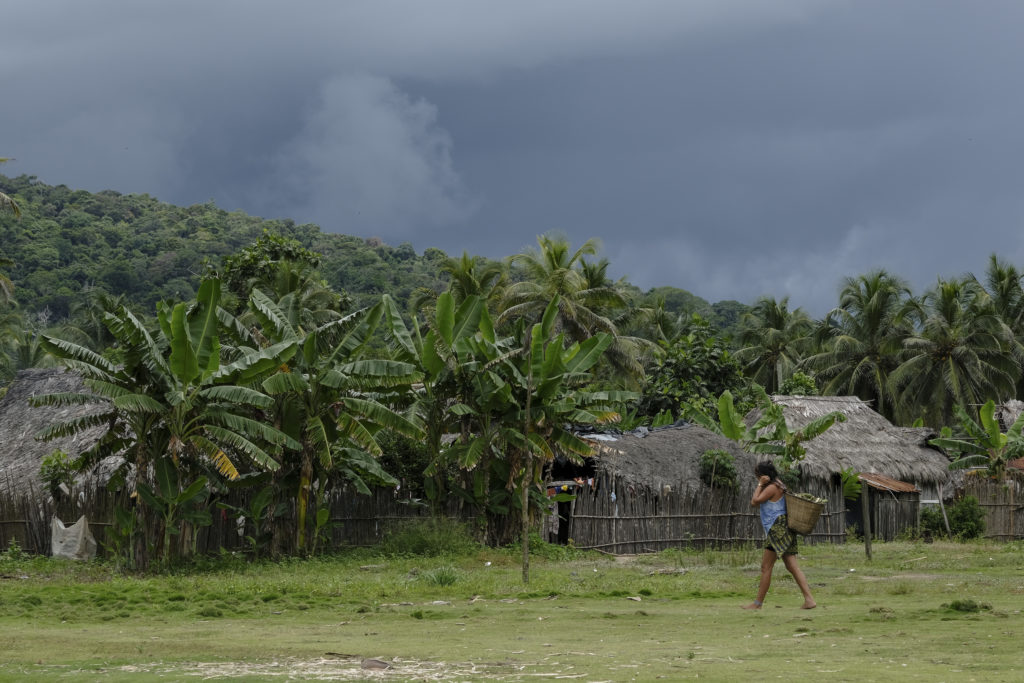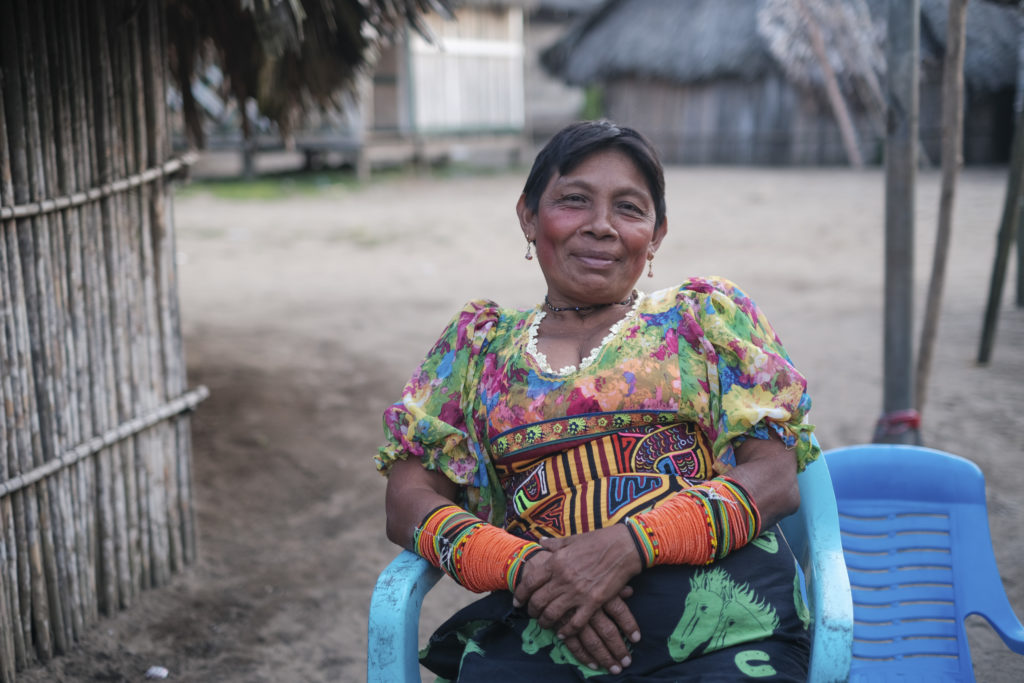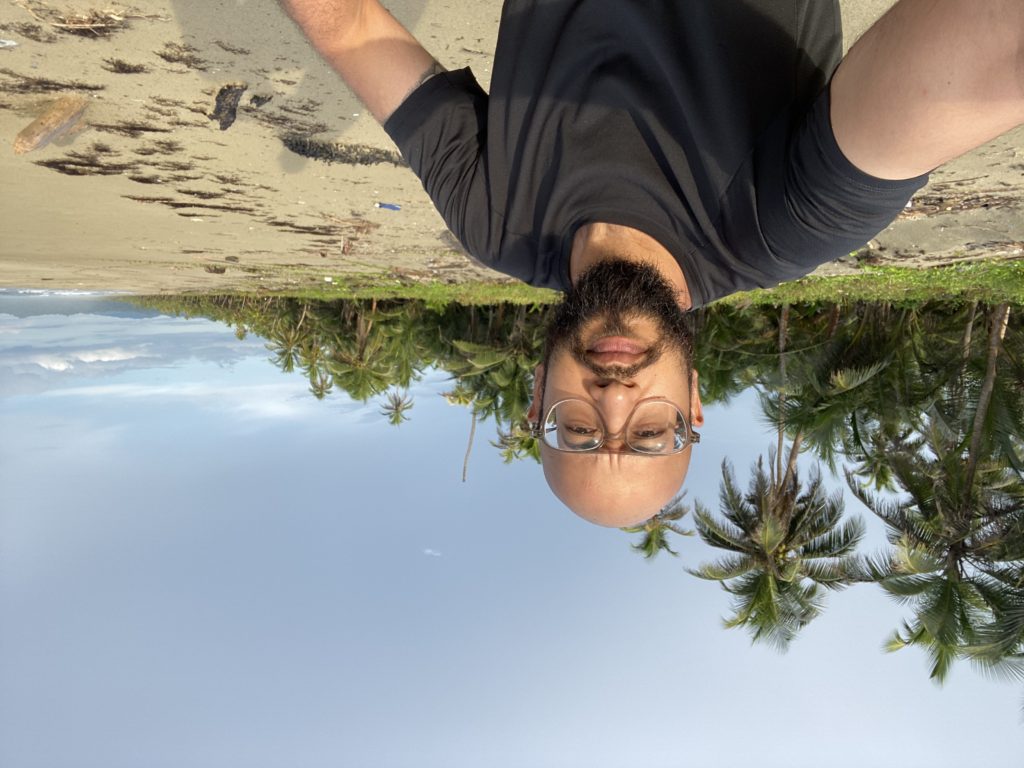
In October 2019, I was given the opportunity to attend the La Wayaka Current residency in Panama. Along with four other artists, I stayed for three weeks in Armila, a remote village in the north of Panama. This was a village that was part of the autonomous reservation of the Guna, an indigenous people hailing from Panama and Colombia. It gave me an opportunity to be immersed for a period of time in a culture that was deeply spiritual while being indelibly rooted and aware of the present.
I arrived with a lot of artistic baggage, full of my own expectations in terms of what I wanted to create, little realising that the point was not the art, but that the art was meant to make a point about me.
Usually, I make art with a plan. Even on a ‘holiday’ I intend to create. This was how I treated my early backpacking trips, which resulted in my second collection, Chai: Travel Poems. But this put a pressure on the idea of travel, where there is an intent beyond the simple notion of what a holiday is meant to be. It is ironic, then, that on a trip where I was supposed to create work I decided to go without a plan, to immerse myself in my surroundings and then see what could emerge from it, even though I brought all the necessary equipment to make. I had a camera, a drone and audio and video recording equipment (microphones, tripod and a small video light).
But it turned out that the Guna people were rather protective of how they were represented. I think it was a combination of being reticent by nature as well as a genuine concern of having their way of life disrupted by tourism. This has happened to other Guna communities, particularly those in the San Blas region, where tourism has changed and often commoditised the nature of the villages there. A gross dependency on the tourism completely upends the natural rhythm of subsistence occupations such as fishing, hunting and farming.
Consequently, I was unable to get permission from the village council of elders (Sahilas) to fly my drone, even though I asked very early on and kept sending reminders. And even photographing the people in the village was frowned upon. Most of the older people did not want their photograph taken. One day, though, an older lady asked for a photograph. I was happily surprised and duly obliged.

Then she asked for the image. Apparently, she thought my camera was an Instax, an instant camera, and she thought she could receive the photo on the spot. She was very disappointed to find out this wasn’t the case and sent off a string of choice Guna invective in my direction. Most of my photographs of people from Armila are those of children, still free from cultural restrictions, still innocent of the ramifications of the image.
We had to get permission for many things in the village, something that felt rather strange, but I found myself thinking about the relationship between permission and appropriation. When are we taking and when are we making? So, instead of trying to push my luck with my camera, I decided to keep a journal that would document things that happened, snippets of conversations with artists and my own reflections about Guna traditions.
This sustained act of writing was something entirely new to me. It changed my practice rather fundamentally. I found myself thinking twice: once in conversation and the next when I documented the moment in the journal. There was no need for permission for the journal, it was not a visible intervention into the space of the village, but nevertheless, it presented an intertwining framework and record of the residency. It also broke my dependency on the image as my governing mode of observation.
This new way of making through various modes of expression allowed me to resolve the initial tension I felt in being unable to operate in all the usual ways I was used to. Moreover, I was immersed in a society that was deeply spiritual and connected to the earth in a healthy symbiotic relationship.
In the course of the residency, I experienced a shift, a growing awareness of nature and a more natural way to engage the body outside of the processed, curated world of the city. It made me realise how dependent I had been on technology as a mediator of meaning. It also allowed me to explore autoethnography for the first time.

What is autoethnography? It is the intersection of writing the self within a larger cultural context. Naturally, these are all broad terms that occupy larger space. What does it mean to write? It can literally be written documentation, but it can also be images, sound and video. What aspect of the self is captured? The physical presence? An emotional or spiritual state? The interactions with others? The reflective musings? It is all of that, depending on the context. Which brings us to culture, that large, amorphous concept. What is culture indeed? In this journal, culture is the combination of being ‘inserted’ into an experience that is multi-faceted in terms of environment, spiritual and social practices, governance and community, both from an experience of the village as well as the interactions with the smaller community of artists. These have been captured in snippets of dialogue, observations and excerpts from the hours of conversation that we had. The artwork that came out of this residency is a reflection of the environmental concerns but also speaks to the camaraderie and communal expression of living.
In framing this journal autoethnographically, I hope to represent the Guna people through a lens that is more than just the typical indigenous, exoticised ‘Other’. The journal is a means of processing experience through sites of story, mythology and reflection but it is also an entry point into Armila, and by extension, the Guna people. While much of my documentation is not rooted in academia or supported by scholarship, the intention is to offer a performative autoethnography, where the “idea, concept, experience and/or culture under consideration guides the form and structure of the work” (Adams, Jones, Ellis, 89). At heart, the journal is not about seeking social justice for the Guna, but rather, about trying to express this rich culture through various lenses.